Phytochemicals in Drug Discovery-A Confluence of Tradition and Innovation
- PMID: 39201478
- PMCID: PMC11354359
- DOI: 10.3390/ijms25168792
Phytochemicals in Drug Discovery-A Confluence of Tradition and Innovation
Abstract
Phytochemicals have a long and successful history in drug discovery. With recent advancements in analytical techniques and methodologies, discovering bioactive leads from natural compounds has become easier. Computational techniques like molecular docking, QSAR modelling and machine learning, and network pharmacology are among the most promising new tools that allow researchers to make predictions concerning natural products' potential targets, thereby guiding experimental validation efforts. Additionally, approaches like LC-MS or LC-NMR speed up compound identification by streamlining analytical processes. Integrating structural and computational biology aids in lead identification, thus providing invaluable information to understand how phytochemicals interact with potential targets in the body. An emerging computational approach is machine learning involving QSAR modelling and deep neural networks that interrelate phytochemical properties with diverse physiological activities such as antimicrobial or anticancer effects.
Keywords: natural products; phytochemicals; traditional medicine.
Conflict of interest statement
P.C., K.W., and M.A.H. are employed by the company AstraZeneca. K.W., and M.A.H. are shareholders. The authors declare that the research was conducted in the absence of any commercial or financial relationships that could be construed as a potential conflict of interest.
Figures



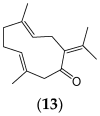
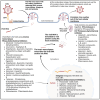


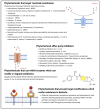
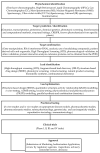


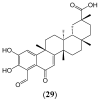
Similar articles
-
Recent advances in the area of plant-based anti-cancer drug discovery using computational approaches.Mol Divers. 2024 Apr;28(2):901-925. doi: 10.1007/s11030-022-10590-7. Epub 2023 Jan 21. Mol Divers. 2024. PMID: 36670282 Free PMC article. Review.
-
Deciphering the Interactions of Bioactive Compounds in Selected Traditional Medicinal Plants against Alzheimer's Diseases via Pharmacophore Modeling, Auto-QSAR, and Molecular Docking Approaches.Molecules. 2021 Apr 1;26(7):1996. doi: 10.3390/molecules26071996. Molecules. 2021. PMID: 33915968 Free PMC article.
-
Phytochemical Repurposing of Natural Molecule: Sabinene for Identification of Novel Therapeutic Benefits Using In Silico and In Vitro Approaches.Assay Drug Dev Technol. 2019 Nov/Dec;17(8):339-351. doi: 10.1089/adt.2019.939. Assay Drug Dev Technol. 2019. PMID: 31846362
-
Computational Methodologies in the Exploration of Marine Natural Product Leads.Mar Drugs. 2018 Jul 13;16(7):236. doi: 10.3390/md16070236. Mar Drugs. 2018. PMID: 30011882 Free PMC article. Review.
-
Combined Bioinformatics and Combinatorial Chemistry Tools to Locate Drug-Able Anti-TB Phytochemicals: A Cost-Effective Platform for Natural Product-Based Drug Discovery.Chem Biodivers. 2022 Nov;19(11):e202200267. doi: 10.1002/cbdv.202200267. Epub 2022 Oct 28. Chem Biodivers. 2022. PMID: 36307750
Cited by
-
Anticancer Ribosomally Synthesized and Post-Translationally Modified Peptides from Plants: Structures, Therapeutic Potential, and Future Directions.Curr Issues Mol Biol. 2024 Dec 26;47(1):6. doi: 10.3390/cimb47010006. Curr Issues Mol Biol. 2024. PMID: 39852121 Free PMC article. Review.
-
Anti-infective synergy of Acacia nilotica bioactive fraction and methyl gallate with meropenem against pathogenicity of Pseudomonas aeruginosa.3 Biotech. 2025 Jul;15(7):209. doi: 10.1007/s13205-025-04372-9. Epub 2025 Jun 11. 3 Biotech. 2025. PMID: 40521215
-
Mandragora autumnalis Distribution, Phytochemical Characteristics, and Pharmacological Bioactivities.Pharmaceuticals (Basel). 2025 Feb 26;18(3):328. doi: 10.3390/ph18030328. Pharmaceuticals (Basel). 2025. PMID: 40143106 Free PMC article. Review.
-
Editorial: Natural remedies repositioned: advancing drug discovery for infectious diseases.Front Pharmacol. 2025 Jul 24;16:1655921. doi: 10.3389/fphar.2025.1655921. eCollection 2025. Front Pharmacol. 2025. PMID: 40777984 Free PMC article. No abstract available.
-
Evaluating the inhibitory efficacy of Oxalis phytocompounds on monoamine oxidase B: An integrated approach targeting age related neurodegenerative diseases through molecular docking and dynamics simulations.PLoS One. 2025 Jul 30;20(7):e0329168. doi: 10.1371/journal.pone.0329168. eCollection 2025. PLoS One. 2025. PMID: 40737296 Free PMC article.
References
-
- Lemonnier N., Zhou G.-B., Prasher B., Mukerji M., Chen Z., Brahmachari S.K., Noble D., Auffray C., Sagner M. Traditional Knowledge-based Medicine: A Review of History, Principles, and Relevance in the Present Context of P4 Systems Medicine. Prog. Prev. Med. 2017;2:e0011. doi: 10.1097/pp9.0000000000000011. - DOI
-
- Pei S.-J. Ethnobotanical Approaches of Traditional Medicine Studies: Some Experiences From Asia. Pharm. Biol. 2001;39((Suppl. 1)):S74–S79. - PubMed
Publication types
MeSH terms
Substances
LinkOut - more resources
Full Text Sources

